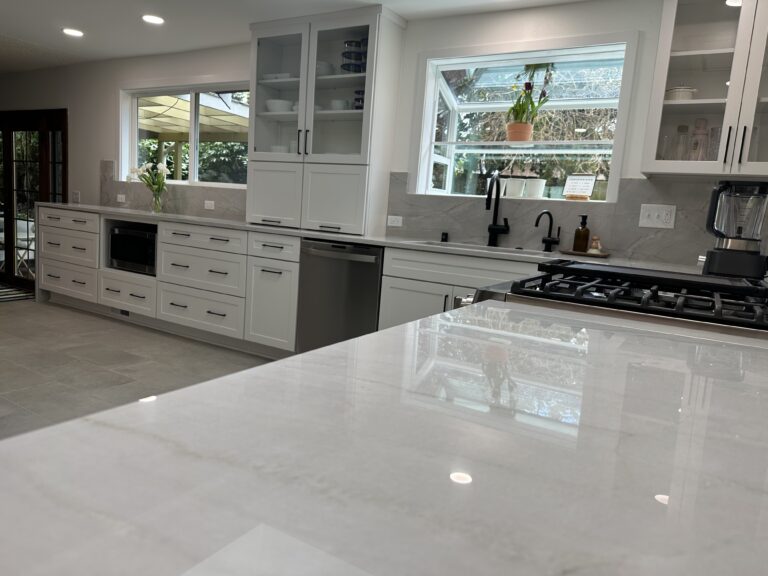When it comes to kitchen and bathroom countertops, investing in quality materials is essential. However, even the most durable surfaces can be susceptible to stains, water damage, and wear over time. This is where countertop sealant comes into play. In this comprehensive guide, we’ll delve into everything you need to know about countertop sealants, including when to reseal countertops to ensure their longevity and beauty.
Understanding Countertop Sealant
Countertop sealants are protective coatings applied to various types of countertops to create a barrier that safeguards against moisture, stains, and other potential damage. They act as a shield, preventing liquids and substances from penetrating the surface and causing lasting harm. Sealants not only help maintain the appearance of your countertops but also extend their lifespan.
The Importance of Sealant Application
Sealing your countertops is not just about aesthetics; it’s also about practicality and longevity. Natural stone countertops, such as granite and marble, are especially porous and susceptible to absorbing liquids. Even engineered materials like quartz can benefit from a protective sealant layer. Sealants provide the following benefits:
- Stain Resistance: Sealants create a barrier that prevents liquids like coffee, wine, and oils from seeping into the surface and causing stubborn stains.
- Moisture Protection: In moisture-prone areas like kitchens and bathrooms, sealants help prevent water damage that can lead to cracks and deterioration. In areas like the Pacific Northwest, moisture protection is even more important.
- Enhanced Durability: Countertop sealants add an extra layer of strength to the surface, helping it resist scratches and everyday wear and tear.
- Easy Maintenance: Sealed countertops are easier to clean because spills and dirt stay on the surface rather than penetrating it.
When to Apply Countertop Sealant
The timing of your initial countertop sealant application is crucial. Generally, newly installed countertops should be sealed immediately. The best practice is to check with your countertop’s manufacturer or installer for specific recommendations, as different materials may have unique requirements. For most natural stone countertops, sealing is recommended every 6 to 12 months. Engineered stone countertops generally requires no sealing, unless the finish is particularly rough such as brushed or leathered finish, less frequent resealing still recommended vs natural stone, typically every 1 to 2 years.
Signs It’s Time to Reseal Countertops
Knowing when to reseal your countertops is equally important. Over time, sealants can wear down due to regular use and cleaning. Here are some indicators that it’s time to reapply the sealant:
- Water Absorption: If water droplets no longer bead up on the surface but are instead absorbed, it’s a sign that the sealant is no longer effective.
- Stains and Discoloration: Stubborn stains that were previously repelled by the sealant might start appearing on the surface.
- Rough Texture: A countertop that feels rough or uneven to the touch could indicate that the sealant has worn away.
- Fading Shine: If the countertop’s shine and luster have diminished, it might be due to a worn-out sealant.
How to Reseal Your Countertops
Resealing your countertops is a straightforward process that can be done by following these steps:
- Clean the Surface: Thoroughly clean the countertop using a mild detergent to remove any dirt, grease, or residue. Allow it to dry completely before proceeding.
- Choose the Right Sealant: Select a high-quality countertop sealant that is suitable for your specific countertop material. Check the manufacturer’s recommendations. Our in-house Tops Field Manager recommends 511 Impregnator.
- Apply the Sealant: Follow the manufacturer’s instructions for application. Generally, you’ll need to evenly apply the sealant using a soft cloth or applicator pad. Make sure to cover the entire surface.
- Let It Dry: Allow the sealant to dry for the recommended time. This usually ranges from 30 minutes to a few hours, depending on the product.
- Buff and Polish: After the sealant has dried, use a clean, dry cloth to buff the countertop gently. This will help bring out its natural shine.
- Avoid Contact: Avoid using the countertop until the sealant has fully cured. This can take anywhere from 24 to 48 hours.
Conclusion
Countertop sealants are your first line of defense against damage and wear. By understanding the importance of sealant application, recognizing the signs that it’s time to reseal, and knowing how to properly reapply it, you can ensure that your countertops remain both stunning and durable for years to come. Regular maintenance and timely resealing will help you enjoy your countertops to the fullest while minimizing the need for costly repairs.

Need a hand from the Pros? Contact us here!
